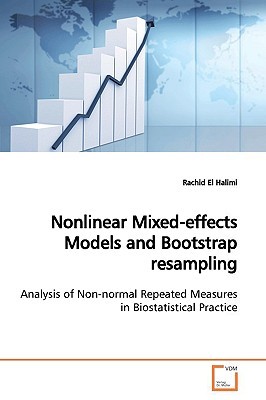
- We will send in 10–14 business days.
- Author: Rachid El Halimi
- Publisher: VDM Verlag
- ISBN-10: 3639153170
- ISBN-13: 9783639153170
- Format: 15.2 x 22.9 x 1.8 cm, minkšti viršeliai
- Language: English
- SAVE -10% with code: EXTRA
Nonlinear Mixed-effects Models and Bootstrap resampling (e-book) (used book) | bookbook.eu
Reviews
Description
In the past decade, mixed-effects modelling has received a great deal of attention in applied and theoretical statistical literature. Mixed models are very flexible tools in analysing repeated measures and hierarchical data. This monograph is divided into three parts, the first presenting a "workshop" of advanced analysis of some real data sets in the context of the mixed models, which allows to favor the conceptualization of the statistical modelling in the theoretical - practical context. This part provide an excellent starting point to analyze longitudinal data. The second part was devoted to a simulation study to assess the robustness of the linearization and the two-stage methods under non- normality of random effects and/or residuals. A complementary simulation study was devoted to the impact of incorrect assumptions on the true structure of the random effects covariance matrix and the true correlation pattern of residuals, over the performance of the linearization approach. In the last part, different bootstrap techniques were suggested, to perform statistical inference based on the repeated measures and on the NLME context.
EXTRA 10 % discount with code: EXTRA
The promotion ends in 23d.14:23:41
The discount code is valid when purchasing from 10 €. Discounts do not stack.
- Author: Rachid El Halimi
- Publisher: VDM Verlag
- ISBN-10: 3639153170
- ISBN-13: 9783639153170
- Format: 15.2 x 22.9 x 1.8 cm, minkšti viršeliai
- Language: English English
In the past decade, mixed-effects modelling has received a great deal of attention in applied and theoretical statistical literature. Mixed models are very flexible tools in analysing repeated measures and hierarchical data. This monograph is divided into three parts, the first presenting a "workshop" of advanced analysis of some real data sets in the context of the mixed models, which allows to favor the conceptualization of the statistical modelling in the theoretical - practical context. This part provide an excellent starting point to analyze longitudinal data. The second part was devoted to a simulation study to assess the robustness of the linearization and the two-stage methods under non- normality of random effects and/or residuals. A complementary simulation study was devoted to the impact of incorrect assumptions on the true structure of the random effects covariance matrix and the true correlation pattern of residuals, over the performance of the linearization approach. In the last part, different bootstrap techniques were suggested, to perform statistical inference based on the repeated measures and on the NLME context.


Reviews